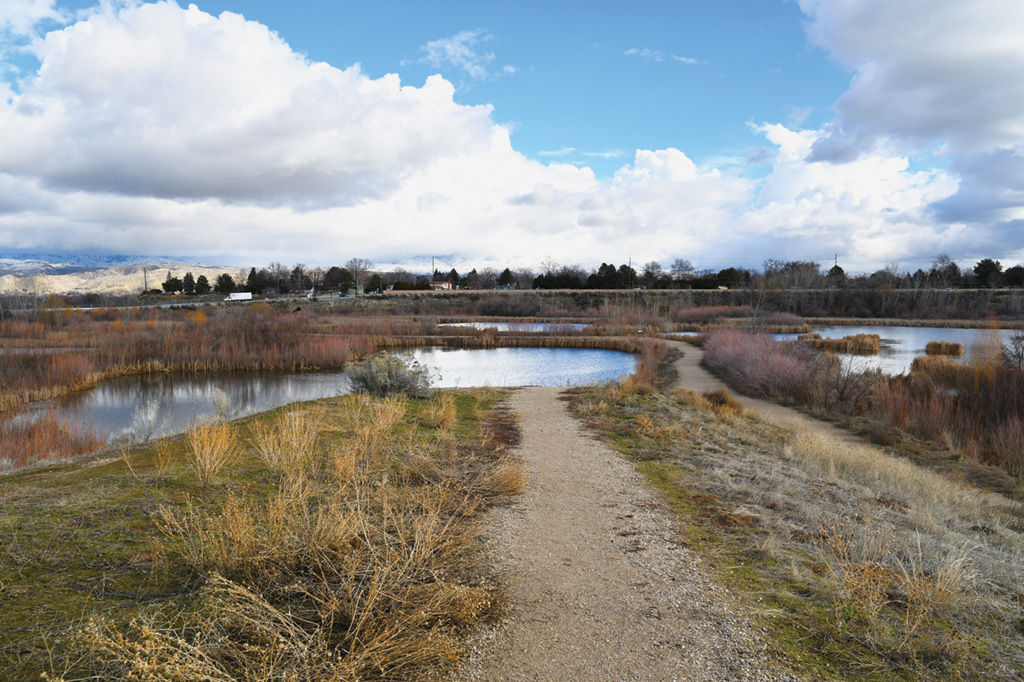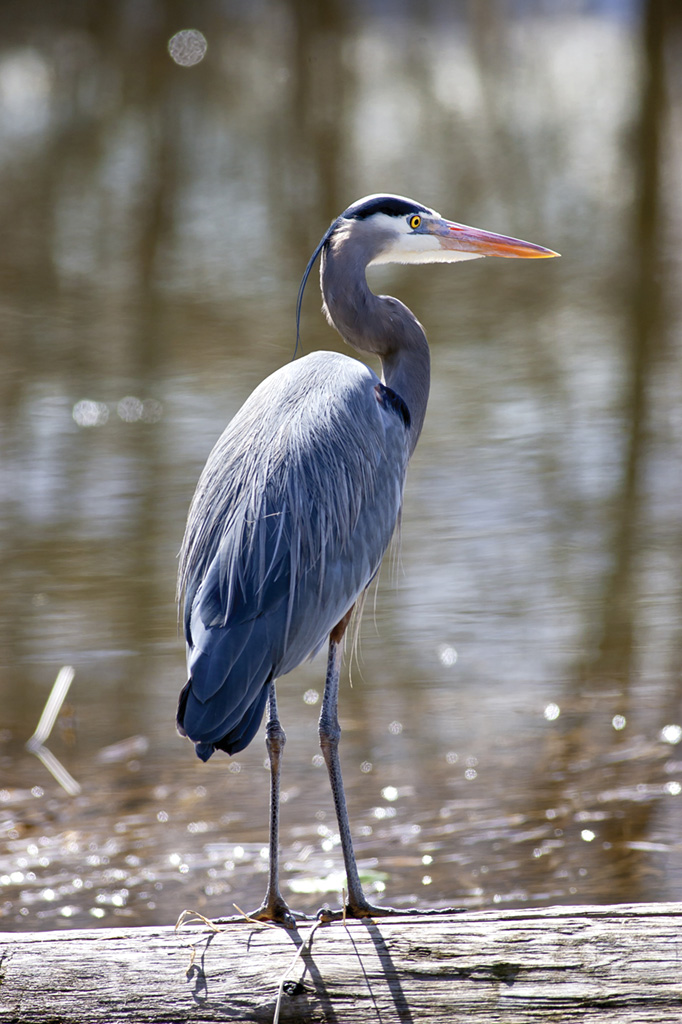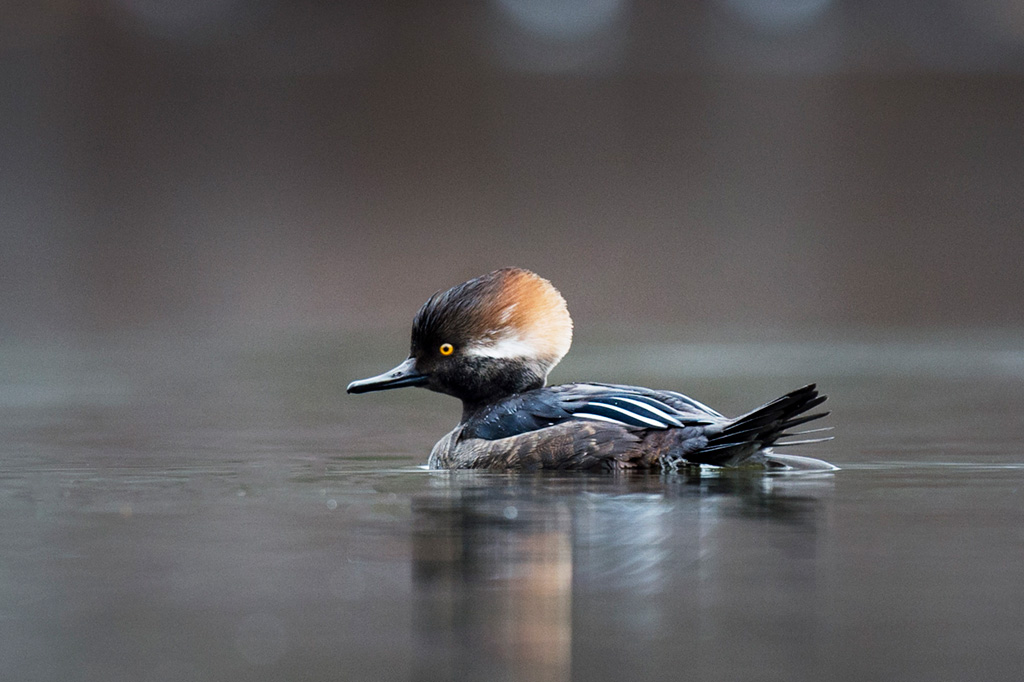As dusk falls on Boise, it’s not uncommon to see large groups of Canada geese winging their way to the west, crossing above neighborhoods and shopping centers, busy streets and golf courses, on their short journey to an evening roosting spot known as Hyatt Hidden Lakes Reserve. There, amid quiet ponds and streams, wild grasses and trees, the geese are joined by a hodgepodge of wildlife and waterfowl that also call Hyatt home.
Of course, geese flying into a ponded area in Boise is hardly a remarkable tale. But the creation and evolution of Hyatt Hidden Lakes Reserve, a 54-acre urban wildlife refuge in the middle of a west Boise neighborhood, can be likened to a Cinderella story. It is the story of a forgotten property that was rescued and transformed into a rich community treasure that is now a wildlife preserve, a city park, and a natural wetland doing double duty as a storm water filtration system.
Once Upon A Time
In the 19th century, the property was a family farm that was worked well into the 20th century when, in the 1960s, the owners leased it out to an asphalt paving company that excavated gravel on the site until the 1980s.
As the story goes, after 20 years of excavating the scrubby property, the gravel operation finally hit the water table and groundwater began bubbling up into the gravel pits.
“Beavers began infiltrating the site, and started building dams,” said Tom Governale, former superintendent of parks for the City of Boise and member of the team that led the design and planning of Hyatt Hidden Lakes. “By the time the gravel operation ended in the late 1980s, the beavers had dammed enough water to create a wetland area, so, it was really the beavers that got this thing started,” he said.
Then, in 1990, along came Larry Hyatt, a conservation-minded Boisean who purchased the excavation-scarred site with the vision of creating a wildlife reserve—a tall order for a rocky plot of land that was bounded by high-traffic roads, neighborhoods and businesses.
“I knew I wanted to create a space for wildlife where they could live and also learn that humans will not encroach upon them,” said Hyatt. “Once they learn that, they can live more naturally in their own environment.”
Hyatt said that the previous owners had wanted to turn the site into softball fields. “To fill it in they kept trying to plug the springs,” he said with a chuckle. “There were six siblings who owned a share of the property, and all of them would get out there in their Wellies with shovels and picks to break up the beaver dams.
“The first thing I did when I bought the land was let the beavers build their dams, and the water came up three feet,” he said. “What was cool was the rising water killed the invasive purple loosestrife and Russian olive trees, and made it a better environment for the cattails to take over.”
It wasn’t long until Hyatt gifted the 22-acre wetland to the City of Boise. The city then purchased an additional 22 acres on the site, and acquired an adjacent 10-acre parcel donated by the Ada County Highway District.
“In the late 1990s, the site was already popular with the local neighbors even before it was developed,” said Governale. “People started going into the area and just walking and creating volunteer trails through the brush. There were lots of ducks and geese migrating through.” But, Governale noted, there was also a growing concern over the potential for wildfires, erosion, invasive plants, and water quality issues that could threaten the habitat for waterfowl and other wildlife. In fact, in the fall of 1998, about 400 ducks and geese died from avian botulism due to poor water conditions and overcrowding of waterfowl.

The reserve is now filled with ponds and streams, wild grasses and cottonwood trees, walking paths and interpretive signs. Photo courtesy City of Boise
“There wasn’t much we could do, we just had to let it run its course,” Governale recalled. “There were so many birds that year and it was a low-water, high-temperature year, the conditions were prime for the virus to take hold.
“The wetlands were naturally evolving, and invasive species were coming in and the ponds were starting to fill with sediment. If we had allowed it to continue it would have become a bog and perhaps a lowland forest,” he said. With the input of hundreds of neighbors, the city drew up a master plan and a design and management plan for the property.
The Story of Storm Water
Over the next few years, key events and partnerships came together to bring Hyatt to where it is today. For one, Ada County Highway District expressed an interest in using the wetland to retain and treat storm water runoff from major streets instead of allowing it to dump into the canals as had previously been done. This would ease flooding after large storm events. And, the city of Boise received a $1.3 million grant from the Environmental Protection Agency to design an innovative storm water filtration project on the site.
The storm water system sends water from street drainage systems through a sedimentation basin to remove oil, grease, debris and sediment. Then, it flows into a vegetated sand filter planted with specially selected grasses and topsoil that biologically removes bacteria, metals and smaller particles from the water. Then the water goes through a layer of crushed rock before flowing into the wetland, where it is retained. The now-clean water can be released as needed into area irrigation canals and, eventually, into the Boise River.
Samples of water that have gone through the sedimentation basin and wetland filters show that pollutants such as aluminum, copper, zinc, ammonia, nitrates and nitrites, and e.coli, are being removed, some with a removal efficiency of 99 percent.
“The system is very effective,” said Governale. “We don’t want to put toxins and sediment back into the river. This keeps the river healthier for fish and waterfowl, and that helps the Valley thrive, so there is also the economic impact of clean water.”
WildLife Returns
Today, 20 years after Larry Hyatt gifted a scrubby wetland to the City of Boise, it is filled with ponds and streams, wild grasses and cottonwood trees, walking paths and interpretive signs. In the middle of the wild grass sits a public art piece called HaBATat by Boise artist Mark Baltes: a steel sculpture designed as a unique bat roost, which is large enough to house hundreds of bats and their young.

Residents of Hyatt Hidden Lakes Reserve include great blue herons.
Waterfowl, birds, hawks, deer and small non-game animals flourish on this site that’s almost entirely surrounded by both residential and industrial land. Over 150 species of birds have been observed at the reserve, and the park has been designated part of the Idaho Birding Trail, a network of sites that provides the best viewing opportunities to see birds in Idaho.
Just like Larry Hyatt dreamed decades ago, the priority of the reserve is to provide safe and natural habitat for waterfowl and other wildlife with minimal impact. Trails are screened with shrubs and topography so that the movement of pedestrians is not visible to waterfowl. This unusual city park has no dogs, bikes, motor vehicles, sports, playgrounds or picnic facilities.
“There are spots where you can overlook the whole site, and walk the pathways, but they’re not in the middle of where the wildlife is, so it provides them with a sense of being protected in their own habitat,” said Kelly Burrows, park designer for the City of Boise.
A Sense of Place
“Hyatt Hidden Lakes gives the neighborhood a sense of place,” said Governale. “One of the important goals was to provide educational opportunities, and school groups go out there to observe wildlife and learn how the wetland works. People love to walk through the reserve, and photographers and birdwatchers come out to observe the wildlife. This one place provides education, wellness, and economic and environmental benefits to the community.”
“Any time we have a way to literally reserve space for wildlife in the city, it’s a nice thing to have,” said Hyatt. “It will be held like this in perpetuity and there is comfort in that. We don’t have to worry about it being changed. It will be here for generations to come.”
From rock pit to reserve, Hyatt Hidden Lakes is a success story both for the community and wildlife, and an example of what can happen when there is collaboration between public agencies, neighbors, and a generous conservation-minded citizen.
And, of course, the beavers, too.

